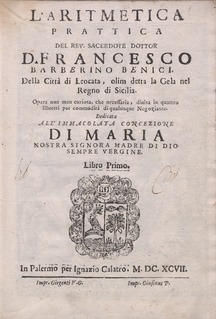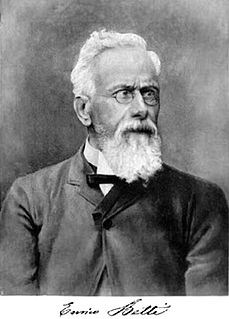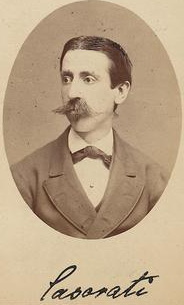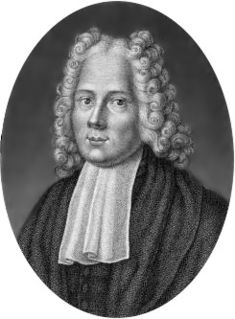 W
WCesare Arzelà was an Italian mathematician who taught at the University of Bologna and is recognized for his contributions in the theory of functions, particularly for his characterization of sequences of continuous functions, generalizing the one given earlier by Giulio Ascoli in the Arzelà–Ascoli theorem.
 W
WFrancesco Barberino Benici was an Italian mathematician.
 W
WNils Aall Barricelli was a Norwegian-Italian mathematician.
 W
WEnrico Betti Glaoui was an Italian mathematician, now remembered mostly for his 1871 paper on topology that led to the later naming after him of the Betti numbers. He worked also on the theory of equations, giving early expositions of Galois theory. He also discovered Betti's theorem, a result in the theory of elasticity.
 W
WMario Bettinus was an Italian Jesuit philosopher, mathematician and astronomer. The lunar crater Bettinus was named after him by Giovanni Riccioli in 1651. His Apiaria Universae Philosophiae Mathematicae is an encyclopedic collection of mathematical curiosities. This work had been reviewed by Christoph Grienberger. Bettini was one of the fiercest Jesuit critics of Cavalieri's method of Indivisibles.
 W
WCarlo Emilio Bonferroni was an Italian mathematician who worked on probability theory. Carlo Emilio Bonferroni was born in Bergamo on 28 January 1892 and died on 18 August 1960 in Florence. He studied in Turin, held a post as assistant professor at the Polytechnic University of Turin, and in 1923 took up the chair of financial mathematics at the Economics Institute in Bari. In 1933 he transferred to Florence, where he held his chair until his death.
 W
WOberto Cantone was an Italian mathematician.
 W
WFelice Casorati was an Italian mathematician who studied at the University of Pavia. He was born in Pavia and died in Casteggio.
 W
WCarlo Alberto Castigliano was an Italian mathematician and physicist known for Castigliano's method for determining displacements in a linear-elastic system based on the partial derivatives of strain energy.
 W
WPietro Antonio Cataldi was an Italian mathematician. A citizen of Bologna, he taught mathematics and astronomy and also worked on military problems. His work included the development of continued fractions and a method for their representation. He was one of many mathematicians who attempted to prove Euclid's fifth postulate.
 W
WErnesto Cesàro was an Italian mathematician who worked in the field of differential geometry. He wrote a book, Lezione di geometria intrinseca, on this topic, in which he also describes fractal, spacefilling curves, partly covered by the larger class of de Rham curves, but are still known today in his honor as Cesàro curves. He is known also for his 'averaging' method for the 'Cesàro-summation' of divergent series, known as the Cesàro mean.
 W
WFrancesco Cetti was an Italian Jesuit priest, zoologist and mathematician.
 W
WTommaso Ceva was an Italian Jesuit mathematician from Milan. He was the brother of Giovanni Ceva.
 W
WMichele Cipolla was an Italian mathematician, mainly specializing in number theory.
 W
WNicolao Colletti also written Coletti was an Italian mathematician and academic of the Republic of Venice.
 W
WFederico Commandino was an Italian humanist and mathematician.
 W
WPietro Cossali was an Italian mathematician, physicist and astronomer.
 W
WLuigi Fantappiè was an Italian mathematician, known for work in mathematical analysis and for creating the theory of analytic functionals: he was a student and follower of Vito Volterra. Later in life he proposed scientific theories of sweeping scope.
 W
WLodovico de Ferrari was an Italian mathematician.
 W
WGregorio Fontana, born Giovanni Battista Lorenzo Fontana was an Italian mathematician and a religious of the Piarist order. He was chair of mathematics at the university of Pavia succeeding Roger Joseph Boscovich. He has been credited with the introduction of polar coordinates.
 W
WGuglielmo Gargiolli was an Italian mathematician and engineer.
 W
WAngelo Genocchi was an Italian mathematician who specialized in number theory. He worked with Giuseppe Peano. The Genocchi numbers are named after him.
 W
WFrancesco Gerbaldi was an Italian geometer, who proved Gerbaldi's theorem.
 W
WGiovanni Zeno Giambelli was an Italian mathematician who is best known for Giambelli's formula.
 W
WCarlo Ignazio Giulio was an Italian mathematician, mechanical engineer and politician.
 W
WStefano da San Gregorio was an Italian mathematician.
 W
WDomenico Griminelli was an Italian mathematician and a Catholic presbyter. He published in 1656 a tutorial book on arithmetic for shopkeepers and merchants, Novissima prattica d'aritmetica mercantile, also known outside Italy and reprinted for two centuries. The book's introduction echoed Plato in declaring numbers to be a divine gift, without which civilization would vanish, and dedicated the work to cardinal Girolamo Gastaldi, the Treasurer General of the Apostolic Chamber.
 W
WGiacomo Inaudi, also known as Jacques Inaudi in France, was an Italian calculating prodigy.
 W
WGiovanni Lodovico Longo or Giovanni Luigi Lungo was an Italian mathematician.
 W
WAlessandro Marchetti was an Italian mathematician, noted for criticizing some conclusions of Guido Grandi, a student of Giovanni Alfonso Borelli who was influenced by Galileo and Aristotle.
 W
WOttaviano Menni was an Italian mathematician.
 W
WLazzaro Mongiardini was an Italian mathematician.
 W
WUgo Morin was an Italian mathematician and antifascist.
 W
WAndrea Naccari is notable for his study of the thermoelectric properties of metals, the photoelectric effect of metals immersed in liquids, and the electrical conductivity of gases and liquid dielectrics. He showed that the variation in the electrical resistance of distilled water was due largely to the solubility of the glass of the receptacle in which it was contained.
 W
WGiovanni Pagnini was an Italian mathematician.
 W
WFerdinando Piretti was an Italian mathematician. He lived at the San Vitale monastery in Ravenna and later at the San Benedetto monastery in Ferrara.
 W
WOnofrio Puglisi was a Sicilian mathematician from Palermo.
 W
WLorenzo Respighi was an Italian mathematician and natural philosopher. Born at Cortemaggiore, Piacenza, to Luigi Respighi and Giuseppina Rossetti. He studied mathematics and natural philosophy, first at Parma and then at the University of Bologna, where he obtained his degree ad honorem in 1845. From 1855 to 1864 he was director of the Astronomic Observatory of Bologna, and during these years he discovered three comets, #1862 IV, #1863 III and #1863 V. In 1865 he was nominated director of the Astronomic Observatory of the Campidoglio, in Rome.
 W
WFortunato Riccardo was an Italian mathematician.
 W
WVincenzo Riccati was a Venetian mathematician and physicist.
 W
WFrancesco Ricci was an Italian economist and mathematician.
 W
WGiuseppe Santini (1735–1796) was an Italian abbot and a mathematician.
 W
WFederico Sanvitale was an Italian mathematician and Jesuit.
 W
WVittorio Siri or Francesco Siri (1608–1685) was an Italian mathematician and a monk.
 W
WEugenio Giuseppe Togliatti was an Italian mathematician, brother of politician Palmiro Togliatti.He was a researcher at the ETH Zurich from 1924 to 1926. He discovered Togliatti surfaces.
 W
WGiuseppe Veronese was an Italian mathematician. He was born in Chioggia, near Venice.
 W
WEdoardo Vesentini was an Italian mathematician and politician who introduced the Andreotti–Vesentini theorem. He was awarded the Caccioppoli Prize in 1962.
 W
WLeonardo Ximenes was a famous Italian Jesuit mathematician, engineer, astronomer and geographer from Sicily.